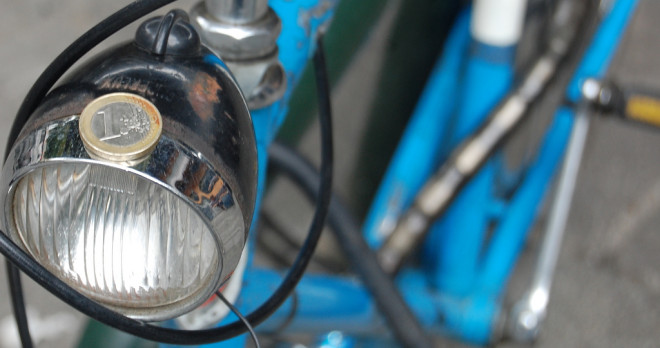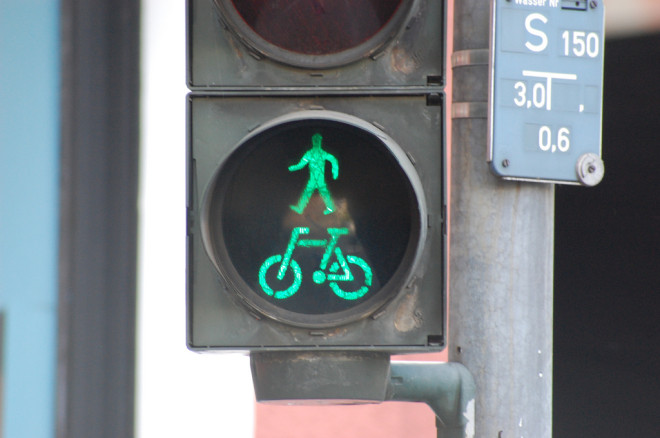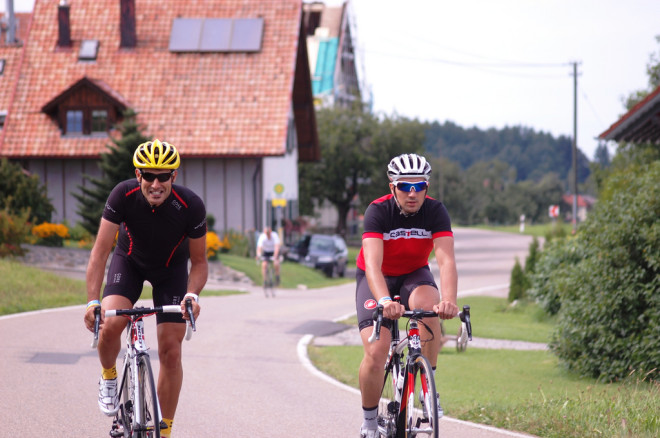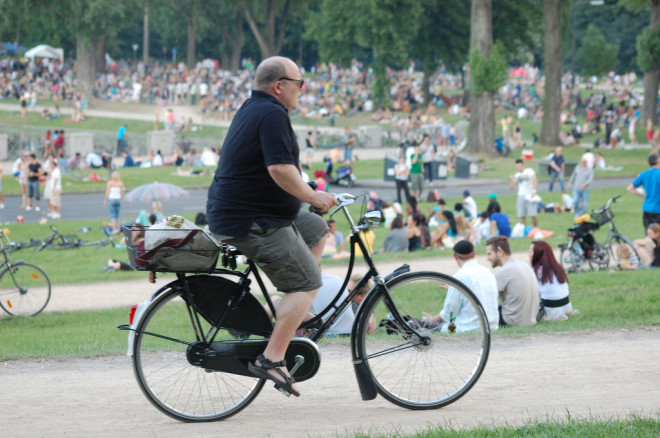
15% of Trips By Bike: Germany’s National Cycling Plan Under the Microscope
How do you get a whole country cycling? Well first of all, you need a plan. The European Union’s most populous country has done just that, releasing a national strategy earlier this month. ECF’s Senior Policy Officer, Fabian Kuester lets us know if Germany will really see 15% of all trips done by bike in 2020.
Having a national plan is nothing new for Germany. From 2002-2012 they've had a national strategy in place, but it now needs updating, with new objectives and a new approach. Being German myself, I decided to have a look at this policy in detail. I wanted to know if the government has ‘got it right’ and also see where other countries could learn from their mistakes.
The backbone of the German Master plan – thankfully- is to get more people cycling. The number of trips by bike are to to jump to 15 % (16 % in cities, 13 % in rural areas). Compare these figures to those seen in 2008, where the mode share was 10 %, up from 9 % in 2002.
And there’s no doubt that this new master plan is comprehensive. It discusses virtually all policy fields relevant for cycling, including integrated transport planning, cycling infrastructure, communication, road safety, education, tourism and e-mobility. It does a great job of painting the current situation and - a European novelty – it comes up with a long list of recommendations to be implemented by all levels of government: federal, regional and local.
Show Me The Money
The plan is also realistic when it comes to spending money. It believes towns and cities should spend between €8 – 19 annually per inhabitant on infrastructure, bike parking, communication etc. depending on the level of development and size. (Keep in mind that the Dutch spend €25 by all governments combined).
But here’s the catch and a huge downfall in the plan. Who’s going to pay for it?
 Germany's federal government shuffles much of the financial responsibility for cycling infrastructure to the local level
Germany's federal government shuffles much of the financial responsibility for cycling infrastructure to the local level
The federal government maintains its policy to only finance cycling infrastructure along federal roads. The respective budget was cut from € 100 million a few years ago to just € 73 million this year. In other words: the federal government invests less than € 1 per inhabitant per year. The budget is set to further decrease to only €60 million for cycle paths along federal roads in 2013. How much should they be spending? If they were to follow an ECF recommendation – 10 % of transport infrastructure budgets for cycling – about € 1 billion would have to be invested by the federal government.
Aside from finances, the plan has a number of good intentions, but falls short on others. On the positive side you can see:
- A move to fully integrate cycling into the transport systems, including in the organizational structure of administrations;
- Employment of a National Cycling Coordinator and install a ‘inter-ministerial working group’ to coordinate cycling measures;
- Provision of a “starter package” for towns and cities with a mode share of less than 10 %;
- Continuation with the successful bicycle academy as a tool to educate and empower local civil servants;
- Development of a research data base; financing of basic research on road safety;
- Improvement of bicycle parking at railway stations;
- Collection of systematic data on bicycle use;
What about Road Safety?
The national strategy is weak however when it comes to improving road safety. In particular, the problem of speeding remains an elephant in the room. An expert group installed by the German ministry of transport itself had advised the German transport minister Ramsauer to verify whether 50 kph as inner-city default speed limit is still deemed suitable. ECF has been an advocate of introducing 30 kph as default speed limit in built-up areas in national highway codes for a long time, and we were supported by the European Parliament in 2011. Unfortunately, the new plan only recommends local authorities to make use of the legal possibility to install 30 kph zones. On the positive side are a number of initiatives to improve motorized vehicle design and equipment to reduce accidents.
Cars and Taxes
Also, speaking of integrated transport planning, the federal government will also need to address its favorable tax treatment policy on company cars. A study published by the European Commission in 2009 found out that 60 % of all new registered cars in 2008 in Germany where company cars – well above the European average of 50 %. The direct fiscal loss was estimated at € 22 billion in Germany alone.
“The situation in most Member States is that the taxation regime for company cars artificially promotes the use of such cars beyond merits,” the Commission concludes in a staff working document accompanying the White Paper on Transport 2011.
Regarding city level, the crucial question is how the projected increase of cycling by 50 % in less than 10 years can be accommodated within the urban landscape. Looking to some of Germany’s Dutch and Danish neighbours, the answer is clear: German cyclists need better cycling infrastructure. In many cases, this will require a re-distribution of scarce urban space. No such recommendations can be found in the new plan.
It’s not all bad
All things considered, the plan is quite advanced when compared to other existing European strategies. It has a long list of measures that are useful and if implemented would surely contribute to a urban cycling renaissance in German towns and cities. But there’s still some work to do. To a large extent, the federal government sidesteps its responsibility to local and regional authorities especially when it comes to investing in cycling infrastructure. And while the plan is full of ‘nice-to-haves’, it falls short on the ‘must-haves’. It doesn’t really address the demand for motorized transportation and traffic calming.
Only time will tell if the plan gets more people cycling, but we’re sure our German members, ADFC, will be doing their best to get everyone on bicycles.
You can find a copy of Germany’s national plan here: http://www.bmvbs.de/SharedDocs/DE/Pressemitteilungen/2012/188-ramsauer-nationaler-radverkehrsplan.html
 About the Author
About the Author
Fabian Küster is a Senior Policy Officer at the European Cyclists’ Federation and is regularly following EU developments and legislation.
He has previously worked in Brussels for a German Member of European Parliament and the German Embassy. He has wealth of experience in and around the EU institutions, and is an expert in the EU policy field of bicycles
Contact the author
Recent news!
Upcoming events
Contact Us
Avenue des Arts, 7-8
Postal address: Rue de la Charité, 22
1210 Brussels, Belgium













